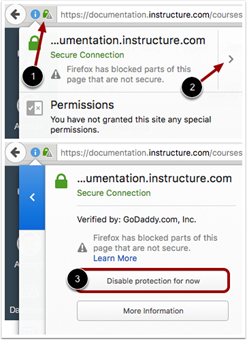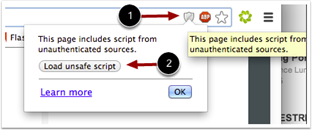Experiencing Canvas glitches, especially during an exam or assignment, can be incredibly frustrating. Many common Canvas issues, such as tool loading failures or content display problems, often result from browser-related issues. Some issues may be due to mobile device interference or improper network connections on your computer. The good news is that you can avoid these problems by taking a few proactive steps.
Preventing Device Issues
Step 1: Connect your computer to the TXST-Bobcats WiFi network.
If you are accessing Canvas on a laptop or tablet, make sure you are connected to a private WiFi network. On campus, the protected WiFi network is called TXST-Bobcats. You will be required to enter your Texas State NetID and password. All public WiFi networks are more congested than private networks, and the university’s public network has restrictions that could cause Canvas content to not work correctly.
Step 2: Turn off your mobile device’s personal hotspot.
Your personal hotspot can interfere with your computer’s ability to connect and stay connected to the private WiFi. Check your mobile device settings and turn the personal hotspot off while you are using Canvas.
Step 3: Turn off Bluetooth on all devices.
Like your personal hotspot, your Bluetooth settings can cause your computer to behave in unexpected ways when accessing Canvas. It is best to turn off Bluetooth on your mobile device and limit your Bluetooth connections on your computer to your peripheral equipment (e.g. a mouse, keyboard, camera, or microphone).
Preventing Browser Issues
Step 1: Use a Supported Browser
For the best performance, Canvas should be used on the most recent version of Chrome, Firefox, or Edge. Visit the Canvas Community Browser and Computer Requirements page to find the current supported browser versions and check your browser compatibility. Please note there are some browsers you should absolutely stay away from, even though they may be supported by Canvas, because they do not work with other integrated tools (read on below for more details).
NOTE: Do NOT use Safari or Firefox Extended Release (ESR) Browser
Canvas is a collection of many tools supported by different companies. Safari and Firefox ESR may not be supported by every tool because Safari does not allow you to temporarily enable insecure content and Firefox ESR is an intentionally delayed (outdated) version of the browser. If you choose to use one of these browsers, you WILL have problems.
Step 2: Keep your Browser Up-to-Date
If you encounter a problem in an older browser version, the best thing to do is update your browser to the newest version.
Step 3: Disable Browser Plugins and Extensions
Sometimes, browser add-ons can clash with Canvas tools, causing problems. If you cannot use Canvas products as expected, try these steps:
- Disable any extensions or plugins that work directly with your web browser.
- If the issue persists, try logging in to Canvas products using an incognito or private browsing window. This provides a clean browser session without any history, cookies, or other potential interference.
If Canvas works in incognito/private mode, the problem is tied to your browser, not Canvas.
Step 4: Check Your Browser Privacy Settings
Most browsers will try to protect you from insecure content – moving from a secure page “https:’’” to an insecure page “http://”. This is a good thing, but it can cause failures in Canvas if the content you need to view is on an insecure page. Depending on the browser you are using, you can force the hidden content to appear by temporarily allowing it to display. This should be done with caution and only when you know the content you are trying to view is safe.
NOTE: Certain browser privacy settings impact how Canvas operates. It’s important to note that Google Chrome uses your information to target advertisements based on your shared information. Learn how to manage your ad privacy settings in Chrome.
Temporarily Enabling Insecure Content in Chrome
Chrome displays a shield icon in the browser address bar [1]. You can choose to override the security restriction and display the content anyway by clicking the shield icon and then clicking the Load unsafe script button [2].

Temporarily Enabling Insecure Content in Firefox
Firefox verifies the website content you view is secure and displays a lock with a warning icon in the browser address bar [1] if the content is insecure. You can choose to override the security restriction and display the content anyway by clicking the lock with a warning icon, then clicking the arrow to expand your options [2], and selecting the Disable protection for now button [3].

Safari Limitations
There is no way to temporarily enable insecure content in Safari – it never displays in the browser. Avoid using the Safari browser for Canvas, especially exams and timed assignments.
Tool-Specific Failures
If you can log into Canvas but a single tool or screen such as MacMillan Learning or McGraw-Hill fails to load properly, you are experiencing a tool failure rather than a Canvas failure. Some of the most common causes for these tool failures are:
- Browser Compatibility: Certain tools may have browser compatibility issues. It is important to verify you are using a supported browser. We do NOT recommend using Safari or Firefox ESR since both are known to have issues with many third-party tools in Canvas.
- Browser Plugin/Extension Conflicts: Browser plugins or extensions can interfere with the functionality of some tools. Try disabling any unnecessary plugins and restart your browser to correct the issue.
- Permissions: You may not have the permissions or role you need to access the tool. This can happen if you are inadvertently added to the tool by your alias email (e.g. boko@txstate.edu) instead of your NetID email (e.g. zzz99@txstate.edu). If you have an alias set up, check with your instructor to make sure the correct email was used.
- Service Outages: Sometimes, the tool service itself may be experiencing a disruption or outage, impacting some people while others remain unaffected. Make sure to log the exact time you experienced the issue so we can help you report it to the tool provider to determine if something on their end failed.
- Network Issues: While less common, network problems, like slow internet connections or server issues, can affect tool performance. If you are having a TXST network issue, you will not be able to access other TXST services, such as email. If the network issue is occurring on the tool provider's server, there is nothing we can do locally to fix it, but we can report it to them on your behalf.
Reporting Canvas Issues
If you have problems using Canvas, there are several pieces of information we need from you to help troubleshoot the issue. If you are unable to provide this information, we cannot successfully determine what caused your failure or help you prevent it from happening again.
When you reach out for help, please have the following details on hand:
- Date and exact time of issue
- Location (on campus or off campus)
- WiFi confirmation with screen shot showing you are successfully connected to the private network
NOTE: Public networks do not work well with Canvas or many of the tools) - Canvas screen and/or tool you are having trouble with (e.g. Assignments, Labyrinth Learning, McGraw-Hill).
- Type of device (e.g. MacBook Pro using macOS Ventura version 13.3.1)
- Browser details (e.g. Google Chrome version 116.0.5845.187)